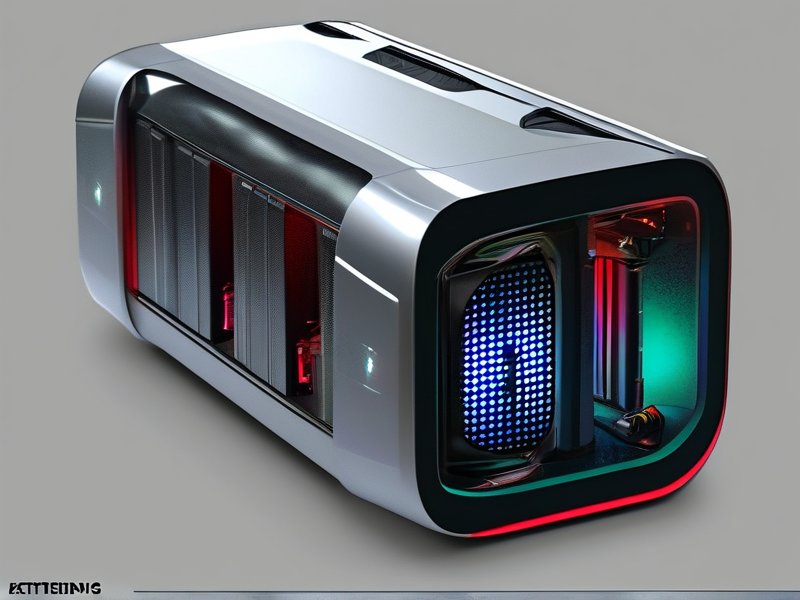
Introduction: The Rise of Next-Gen Cloud PCs in Remote Work
As remote work and distributed teams become the new normal, the demand for seamless, high-performance computing solutions has never been higher. Traditional workstations are no longer sufficient to meet the needs of professionals requiring powerful processing capabilities, specialized software, or access to resources from anywhere. Enter next-gen virtual workstations, particularly cloud PCs, which are redefining remote computing in 2024. These cloud-based platforms, such as EdgeNode’s Cloud PC, offer scalable, secure, and cost-effective alternatives to physical hardware. By leveraging advancements in cloud infrastructure and virtualization, they empower users to tackle complex tasks—from 3D rendering to data analytics—without compromising performance.
But what makes these solutions truly revolutionary? Let’s explore their evolution, core features, and real-world applications.
---Section 1: Evolution of Virtual Workstations
The concept of virtual workstations isn’t new, but recent technological leaps have pushed them to the forefront of remote computing. Early iterations faced challenges like latency, limited customization, and dependency on local hardware. Today’s next-gen cloud PCs, however, integrate cutting-edge cloud computing principles to overcome these barriers:
- Scalability on Demand: Users can instantly scale resources (CPU cores, GPU power, RAM) to match project requirements. For example, a graphic designer might boost GPU capacity for real-time rendering and then revert to a cost-efficient configuration afterward.
- Ubiquitous Access: Workstations are accessible via any internet-connected device—laptops, tablets, or even thin clients—eliminating the need for high-end local hardware. This is particularly transformative for remote teams in regions with limited infrastructure.
- Cost Efficiency: By replacing capital expenditures on physical devices with pay-as-you-go models, organizations reduce upfront costs and maintenance overhead.
The shift to cloud PCs has also been accelerated by advancements in low-latency networking and edge computing, ensuring that even data-intensive applications run smoothly. For instance, platforms like EdgeNode’s Cloud PC leverage edge nodes to minimize lag, making real-time collaboration on engineering simulations or video editing feasible.
---Section 2: Key Features Driving the Cloud PC Revolution
Next-gen virtual workstations excel in three critical areas: performance, flexibility, and security. Here’s a closer look at their defining features:
1. High-Performance Computing (HPC) Capabilities
Modern cloud PCs are engineered to handle resource-heavy tasks. Features like dedicated GPUs (e.g., NVIDIA or AMD instances) and multi-core processors enable professionals in fields like architecture and AI development to run complex applications without bottlenecks. For example, a mechanical engineer can perform finite element analysis (FEA) on a cloud PC with an NVIDIA A100 GPU, achieving results in minutes rather than hours.
2. Flexible Customization
Users can configure their virtual workstations to align with specific needs. This includes:
- Selecting OS flavors (Windows, Linux, macOS).
- Installing proprietary software or industry-specific tools (e.g., AutoCAD, Adobe Creative Suite).
- Adjusting storage and RAM allocations dynamically.
EdgeNode’s Cloud PC, for instance, allows users to deploy pre-configured environments tailored to gaming, data science, or enterprise applications, saving setup time.
3. Enterprise-Grade Security
Data protection is paramount in cloud computing. Leading providers implement:
- End-to-End Encryption: Securing data in transit and at rest.
- Granular Access Controls: Role-based permissions and multi-factor authentication (MFA).
- Disaster Recovery: Automated backups and failover mechanisms to ensure uptime.
These safeguards are critical for industries handling sensitive information, such as healthcare or finance.
---Section 3: Real-World Applications and Future Trends
Next-gen virtual workstations are already transforming industries. Here are some use cases:
1. Remote Creative Work
Freelance designers and animators can ditch heavy workstations and instead use cloud PCs for tasks like 4K video editing or 3D modeling. Tools like Blender or Photoshop run smoothly on platforms like EdgeNode’s Cloud PC, even over mid-range internet connections.
2. Engineering and R&D
Engineers can prototype and simulate products in real time. For example, automotive companies might use cloud-based CAD tools to iterate on vehicle designs without needing on-premise servers.
3. Remote IT Support and Training
IT teams can troubleshoot systems or deploy training environments instantly. A cloud PC can be provisioned in minutes to replicate an employee’s workflow for diagnostics or skill development.
Future Trends to Watch
The next frontier for cloud PCs includes:
- AI-Enhanced Resource Allocation: Machine learning algorithms optimizing resource distribution in real time.
- Integration with IoT: Seamless connectivity to smart devices for remote monitoring and control.
- Hybrid Workstation Models: Blending cloud and local hardware for optimal performance and cost.
Conclusion: Embracing the Future of Remote Work
Next-gen cloud PCs are not just a technological upgrade—they’re a paradigm shift in how we approach remote computing. By offering unmatched performance, flexibility, and security, they empower professionals to work smarter, faster, and more collaboratively. As platforms like EdgeNode’s Cloud PC continue to evolve, we can expect them to become the backbone of distributed workforces in 2024 and beyond. Whether you’re a solo creative professional or part of a global engineering team, adopting cloud-based virtual workstations is no longer optional—it’s the key to staying competitive in a digital-first world.
Ready to revolutionize your workflow? Explore EdgeNode’s Cloud PC and experience the future of remote computing today.
